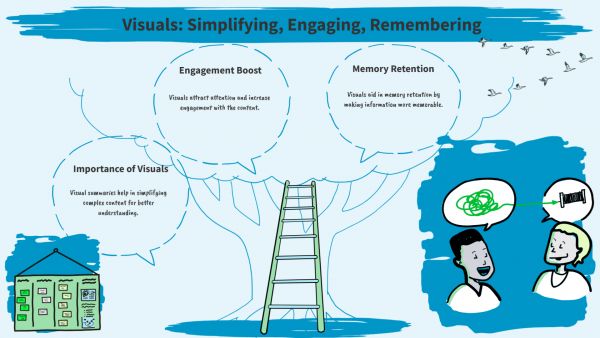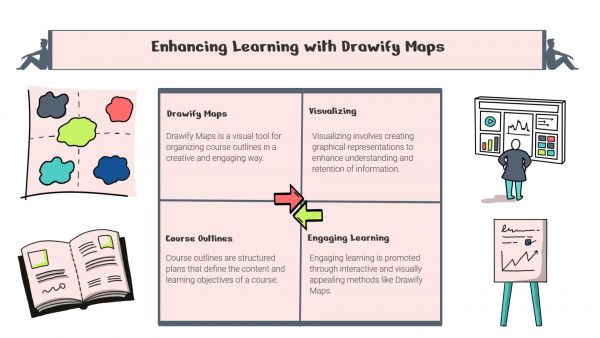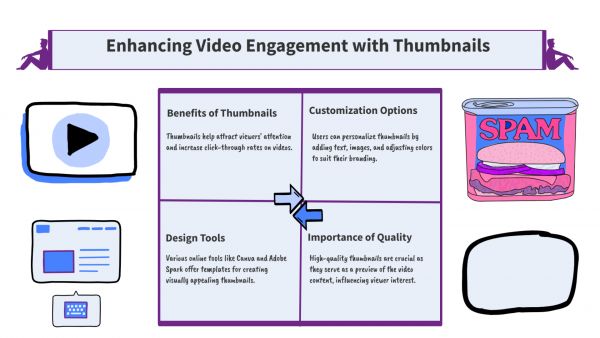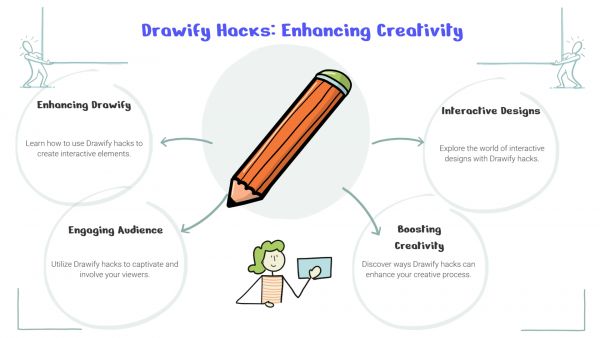Whether you've got stories to tell or art to create, there's a place for you here.

Online Course Creators
Visualizing SEO for Courses
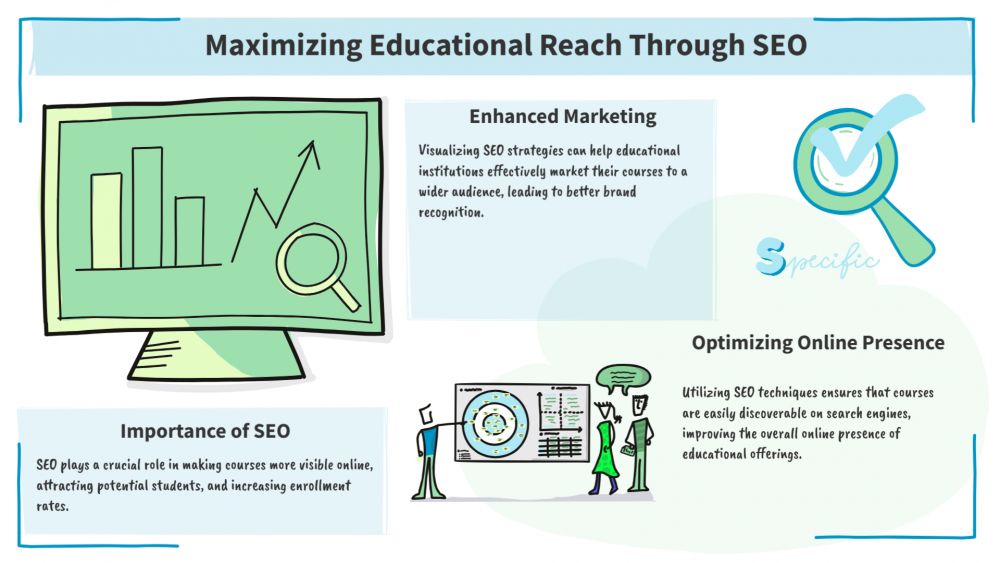
-
SDSwarnali Das- Co-founder, Chief Product Officer, Drawify
-
Sep 28, 2025 5 min read
For every online course developer, training provider, or educational platform, SEO (Search Engine Optimisation) has become important in today's competitive digital environment. Not only does being able to rank higher in search results boost visibility, but it also establishes reputation and draws in additional students. But because SEO is so full of technical terms, keyword tactics, and algorithm changes, it may sometimes appear intimidating. This is where visualisation tools like Drawify come in, which help instructors, students, and course designers alike understand and apply difficult SEO ideas in an entertaining and effective way.
This article explains how to use Drawify to visualise SEO tactics for courses, enhancing the effectiveness of your course material and fostering an interactive learning environment.
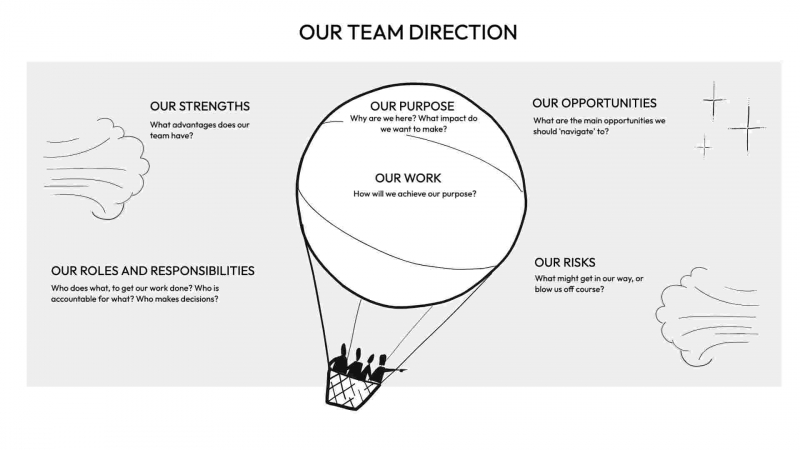
The Significance of SEO for Online Courses:
Let's first discuss the importance of SEO in the education sector before moving on to visualisation:
· Visibility & Reach: With thousands of online courses to choose from, making an impression on search engine results pages guarantees that the relevant people see your course.
· Organic Traffic: Without largely depending on sponsored advertisements, SEO generates steady, affordable visitors.
· Authority & Trust: Content with a high rating imparts knowledge and persuades students to pick your course over rivals.
· Conversion Optimisation: By drawing in students who are motivated to learn, SEO raises enrolment rates.
Clear and organised presentation is necessary for course developers to help students understand SEO fundamentals and tactics, or even to apply SEO concepts to their own course marketing. This is where Drawify comes into play.
The importance of visuals in SEO learning:
SEO is a complex topic that includes backlinks, analytics, content marketing, on-page optimisation, technical SEO, and keyword research. It might not be enough for students to only read about these components. According to studies, people only remember 10% of textual information but 65% of visual information.
Visualising SEO through diagrams, flowcharts, and icons:
· breaks down complex strategies into simple steps.
· shows the connections between several SEO elements.
· makes education dynamic and interesting.
· makes it easier for teams or students to recall SEO frameworks.
How Drawify Simplifies SEO Visualisation:
Drawify is a creative platform that provides templates, icons, and ready-to-use, customisable illustrations for a range of commercial and instructional applications. Without the need for design skills, it enables you to create visually appealing, professional, and easy-to-understand content for SEO classes.
Drawify can be used in the following ways for SEO-related courses:
1. Keyword Research Maps:
Visualise the process of finding relevant keywords with mind maps, showing:
· Core topics (e.g., “Digital Marketing Course”).
· Long-tail variations (e.g., “SEO basics for beginners”).
· Search intent mapping (informational, navigational, transactional).
The drag-and-drop icons in Drawify make keyword strategy readily comprehensible by representing tools like SEMrush and Google Keyword Planner.
2. On-Page SEO Checklists:
You can make the following instead of just writing down on-page SEO factors:
· Infographics that emphasise internal linking, meta descriptions, title tags, and mobile optimisation.
· Visual flowcharts that demonstrate how to optimise a course landing page step-by-step.
Students can easily recall best practices while optimising their own websites thanks to this.
3. Technical SEO Diagrams:
Learners are frequently intimidated by technical SEO. Drawify allows you to:
· Use diagrams to show how a website can be crawled and indexed.
· Demonstrate how structured data, mobile responsiveness, and site speed affect search rankings.
· Make basic illustrations that describe robots.txt and XML sitemaps.
Technical features are simplified in these illustrations so that novices can understand them.
4. Link-Building Workflows:
Backlinks are essential for successful SEO. Drawify allows you to design:
· Flowcharts showing guest posting outreach tactics.
· Diagrams showing how domain authority is increased by high-quality links.
· Icons for establishing connections with industry bloggers and influencers.
These aid students in seeing link-building as a methodical procedure as opposed to a vague idea.
5. Analytics & Reporting Dashboards:
Without measuring and tracking, SEO cannot be considered complete. With Drawify, you may produce images that demonstrate:
· Google Analytics funnel breakdowns for course conversions.
· Illustrations explaining metrics like bounce rate, CTR, and keyword rankings.
· Comparison charts between SEO and paid campaigns.
This visual approach makes reporting more intuitive for learners.
Benefits of Using Drawify in SEO Courses:
When you incorporate Drawify into your SEO instruction, there are several benefits:
· Clarity: Complicated procedures are simplified into easily understood images.
· Engagement: Interactive visual content keeps learners inspired.
· Retention: Students are more likely to retain SEO principles over time when these concepts are presented visually.
· Customisation: Adapt images to the varying skill levels of learners.
· Professional Appeal: Well-designed courses increase brand credibility.
Practical Applications for Educators & Students:
· Course Creators: Create infographics, marketing graphics, and course slides using Drawify.
· SEO Trainers: Create engaging workshops with checklists and visuals for SEO trainers.
· Students: Students may develop campaign reports, SEO tactics, and project presentations using Drawify templates.
· Agencies Offering Courses: Use visual storytelling to highlight case studies and success stories.
Steps to Get Started with Drawify for SEO Visualisation:
Step 1: Identify SEO Topics: Break down your curriculum into modules (keyword research, on-page SEO, etc.).
Step 2: Choose Templates: Select Drawify templates that match your teaching needs.
Step 3: Customise Visuals: Add icons, arrows, and text to illustrate your points.
Step 4: Integrate into Learning Material: Use visuals in slides, videos, and downloadable resources.
Step 5: Engage Learners: Encourage students to create their own SEO diagrams as assignments.
Future of Visual SEO Education:
The use of visual learning techniques will become more and more crucial as online education grows. With the rise of microlearning and interactive courses, platforms like Drawify will play a central role in making technical subjects like SEO easier to grasp. In order to differentiate themselves in the e-learning market, course developers need to combine their knowledge of SEO with compelling visual storytelling.
Online course success depends on SEO, yet because of its intricacy, students frequently find it daunting. By using Drawify for SEO visualisation, instructors and course designers may make these ideas easier to understand, increase student engagement, and provide value that lasts. Drawify helps turn abstract techniques into practical, understandable images, whether you're teaching link-building, technical SEO, or keyword research.
Visual storytelling is becoming indispensable in a world where people's attention spans are getting shorter and competition is fierce. Additionally, using Drawify to visualise SEO for courses makes the procedure simple and powerful.
- Events
- Workshops
- Visual Storytelling
- How to video
- Communities
- Sketchnoting
- Templates
- UX Designers
- Agile Professionals
- Product Managers
- Freelance Graphic Designers
- Creative Tech Enthusiasts
- Online Course Creators
- Social Media Content Creator
- Creative Agency Owners
- Marketing Professionals
- EdTech Professionals
- Scrum Masters
Come, Be Part of Something Special
-
Got ideas that need visual superpowers?
Jump in and start creating presentations and communications that people actually remember.
Sign In -
Are you an artist ready to grow?
Join our Drawifier family and focus on what you love most - creating art that matters.
Become a Drawifier
Get visualisation tips every week
Subscribe to the Drawify Newsletter, and feed your creativity with visualisation tips and techniques, as well as the latest Drawify workshops, news and resources.
